View a list of Programs and Tools Which Could Provide Technical Assistance to a Landowner
For the purpose of this website, a technical assistance might include:
- Free expert advice by professionals in the conservation field including for design and implementation of a conservation, mitigation, or water quality plan
- Review and implementation of sustainable and best management practices involving subjects such as wildlife management, erosion, forest productivity, etc.
- Advice on project development for grant proposals
- Property site visit with individualized recommendations based on property owner’s management goals
Programs and Tools Which Could Provide Technical Assistance to a Landowner
Click on a program below to learn more
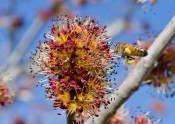 Agricultural Conservation Easement Program’s Wetland Reserve Easements - CEP WRE, created in the 2014 Farm Bill is the newest version of the previously authorized Wetlands Reserve Program. Under ACEP WRE, the Natural Resources Conservation Service (NRCS) provides financial and technical support to private landowners and Indian tribes to protect, enhance, or restore wetlands. A wetland reserve easement is used to accomplish this protection. Read More →
Agricultural Conservation Easement Program’s Wetland Reserve Easements - CEP WRE, created in the 2014 Farm Bill is the newest version of the previously authorized Wetlands Reserve Program. Under ACEP WRE, the Natural Resources Conservation Service (NRCS) provides financial and technical support to private landowners and Indian tribes to protect, enhance, or restore wetlands. A wetland reserve easement is used to accomplish this protection. Read More → AgriLife Extension Program - Texas A&M AgriLife Extension Service The AgriLife Extension Program, a part of Texas A&M AgriLife Extension Service, is an education agency with a statewide network of professional educators and volunteers. AgriLife presents research-based education programs on a wide variety of topics from 4-H Youth Development to Disaster Management. Courses of interest to wetland owners may include restoration and conservation of wildlife habitat, wildlife and fisheries management, water use efficiency, watershed health and protection, and wetland restoration. The AgriLife Extension Program website offers online courses and job training, access... Read More →
AgriLife Extension Program - Texas A&M AgriLife Extension Service The AgriLife Extension Program, a part of Texas A&M AgriLife Extension Service, is an education agency with a statewide network of professional educators and volunteers. AgriLife presents research-based education programs on a wide variety of topics from 4-H Youth Development to Disaster Management. Courses of interest to wetland owners may include restoration and conservation of wildlife habitat, wildlife and fisheries management, water use efficiency, watershed health and protection, and wetland restoration. The AgriLife Extension Program website offers online courses and job training, access... Read More →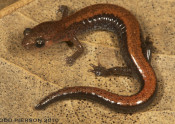 Candidate Conservation Agreement with Assurances (CCAA) - US Fish and Wildlife Service (USFWS) Candidate Conservation Agreements with Assurances are a tool for non-Federal private landowners who voluntarily take measures to stabilize and restore populations of rare or candidate species before they are listed under the Endangered Species Act. Landowners participate in identifying threats to these species, by taking part in conservation activities specific to the species, and by improving and maintaining critical habitat. This formal agreement between the landowner and US Fish and Wildlife Service guarantees that if the CCAA if fulfilled, the landowner will... Read More →
Candidate Conservation Agreement with Assurances (CCAA) - US Fish and Wildlife Service (USFWS) Candidate Conservation Agreements with Assurances are a tool for non-Federal private landowners who voluntarily take measures to stabilize and restore populations of rare or candidate species before they are listed under the Endangered Species Act. Landowners participate in identifying threats to these species, by taking part in conservation activities specific to the species, and by improving and maintaining critical habitat. This formal agreement between the landowner and US Fish and Wildlife Service guarantees that if the CCAA if fulfilled, the landowner will... Read More →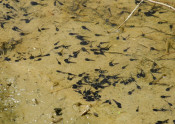 Conservation Technical Assistance Program (CTA) - USDA Natural Resources Conservation Service (NRCS) The Conservation Technical Assistance (CTA) program is a voluntary program administered by the National Resources Conservation Service (NRCS) to provide land users with the technical assistance needed to maintain and restore healthy productive landscapes. CTA assistance can help address a broad range of conservation topics including enhancement of fish and wildlife habitat, soil loss from erosion, agricultural waste and nutrient management, and long term sustainability of production lands. Land users such as agricultural and silvicultural producers, local governments, citizen groups, Tribal governments,... Read More →
Conservation Technical Assistance Program (CTA) - USDA Natural Resources Conservation Service (NRCS) The Conservation Technical Assistance (CTA) program is a voluntary program administered by the National Resources Conservation Service (NRCS) to provide land users with the technical assistance needed to maintain and restore healthy productive landscapes. CTA assistance can help address a broad range of conservation topics including enhancement of fish and wildlife habitat, soil loss from erosion, agricultural waste and nutrient management, and long term sustainability of production lands. Land users such as agricultural and silvicultural producers, local governments, citizen groups, Tribal governments,... Read More →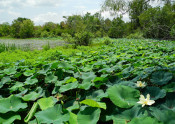 Environmental Quality Incentives Program (EQIP) - USDA Natural Resources Conservation Service (NRCS) EQIP About EQIP The Environmental Quality Incentives Program (EQIP) is a voluntary conservation program administered by the Natural Resources Conservation Service (NRCS). The program’s mission is to promote the compatibility of agricultural production, forest management, and environmental conservation. Financial and technical assistance are provided to enrolled landowners to implement conservation practices (structural and management) on eligible lands. Eligible lands include cropland, non-industrial private forestland, pastureland, ranchland, and other types of farm land. Applicants for an EQIP contract must control or own the... Read More →
Environmental Quality Incentives Program (EQIP) - USDA Natural Resources Conservation Service (NRCS) EQIP About EQIP The Environmental Quality Incentives Program (EQIP) is a voluntary conservation program administered by the Natural Resources Conservation Service (NRCS). The program’s mission is to promote the compatibility of agricultural production, forest management, and environmental conservation. Financial and technical assistance are provided to enrolled landowners to implement conservation practices (structural and management) on eligible lands. Eligible lands include cropland, non-industrial private forestland, pastureland, ranchland, and other types of farm land. Applicants for an EQIP contract must control or own the... Read More →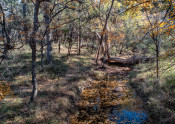 Forest Legacy Program (FLP) - Texas A&M Forest Service (TFS) About the Forest Legacy Program The Forest Legacy Program (FLP), administered by the Texas A&M Forest Service, the State of Texas, and USDA Forest Service, is a voluntary program which purchases conservation easements on forestland voluntarily offered for purchase by private landowners. Protecting priority forests from conversion to non-forested land use is the program’s goal. Forested wetland conservation is an aspect of this program. Eligible land must be in the Forest Legacy target area. Landowners must have clear title, be willing to permanently... Read More →
Forest Legacy Program (FLP) - Texas A&M Forest Service (TFS) About the Forest Legacy Program The Forest Legacy Program (FLP), administered by the Texas A&M Forest Service, the State of Texas, and USDA Forest Service, is a voluntary program which purchases conservation easements on forestland voluntarily offered for purchase by private landowners. Protecting priority forests from conversion to non-forested land use is the program’s goal. Forested wetland conservation is an aspect of this program. Eligible land must be in the Forest Legacy target area. Landowners must have clear title, be willing to permanently... Read More →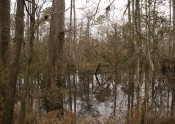 Forest Stewardship Program (FSP) - Texas A&M Forest Service (TFS) About the Forest Stewardship Program The Forest Stewardship Program, administered by Texas A&M Forest Service and their partner, USDA Forest Service, provides technical assistance to landowners who wish to sustainably manage their forested property. There is no cost to the landowner for assistance or forest plan preparation. More than 8,000 FSP plans have been created since FSP began in 1991, enrolling more than 1.4 million acres of Texas forests. Foresters help landowners tailor a management plan to their goals and unique forestland. This... Read More →
Forest Stewardship Program (FSP) - Texas A&M Forest Service (TFS) About the Forest Stewardship Program The Forest Stewardship Program, administered by Texas A&M Forest Service and their partner, USDA Forest Service, provides technical assistance to landowners who wish to sustainably manage their forested property. There is no cost to the landowner for assistance or forest plan preparation. More than 8,000 FSP plans have been created since FSP began in 1991, enrolling more than 1.4 million acres of Texas forests. Foresters help landowners tailor a management plan to their goals and unique forestland. This... Read More → Forest Taxation Program - Texas A&M Forest Service (TFS) Texas A&M Forest Taxation Program was developed to assist forestland owners in navigating taxes associated with operation and stewardship of a healthy forest. In silviculture, property taxes, cost-share assistance, capital gains taxes, and land and conservation easement donations are complex legal arrangements that may have taxation implementations; and timberland operation and ownership is not always well understood by tax professionals. The Forest Taxation Program website contains guides to the Timberland Property Tax in Texas, information on tax incentives associated with timberland, tax valuation... Read More →
Forest Taxation Program - Texas A&M Forest Service (TFS) Texas A&M Forest Taxation Program was developed to assist forestland owners in navigating taxes associated with operation and stewardship of a healthy forest. In silviculture, property taxes, cost-share assistance, capital gains taxes, and land and conservation easement donations are complex legal arrangements that may have taxation implementations; and timberland operation and ownership is not always well understood by tax professionals. The Forest Taxation Program website contains guides to the Timberland Property Tax in Texas, information on tax incentives associated with timberland, tax valuation... Read More →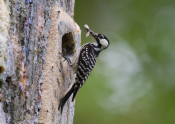 Habitat Conservation Plan (HCP) and Incidental Take Permits - US Fish and Wildlife Service (USFWS) Incidental Take Federally listed and threatened endangered species often rely on critical habitat found on private land. The population and habitat needs of one of these species may be juxtaposed with economic development and other legal activities on a landowner’s property. In these situations, “incidental take” of a protected species can occur. Incidental take without an approved permit from USFWS is subject to penalty under the Endangered Species Act. The Endangered Species Act provides a mechanism by which landowners can minimize and... Read More →
Habitat Conservation Plan (HCP) and Incidental Take Permits - US Fish and Wildlife Service (USFWS) Incidental Take Federally listed and threatened endangered species often rely on critical habitat found on private land. The population and habitat needs of one of these species may be juxtaposed with economic development and other legal activities on a landowner’s property. In these situations, “incidental take” of a protected species can occur. Incidental take without an approved permit from USFWS is subject to penalty under the Endangered Species Act. The Endangered Species Act provides a mechanism by which landowners can minimize and... Read More → Landowner Incentive Program - Texas Parks and Wildlife Department Landowner Incentive Program (LIP) The Landowner Incentive Program (LIP) is a voluntary conservation program administrated by Texas Parks and Wildlife Department and funded through the US Fish and Wildlife Service (USFWS) Partners for Fish and Wildlife Program, National Fish and Wildlife Foundation, and others. LIP provides financial assistance to landowners who wish to implement conservation practices, particularly for activities benefiting rare or at-risk species and valuable riparian areas and watersheds. LIP is a reimbursement program. Landowners will receive payment upon completion of the... Read More →
Landowner Incentive Program - Texas Parks and Wildlife Department Landowner Incentive Program (LIP) The Landowner Incentive Program (LIP) is a voluntary conservation program administrated by Texas Parks and Wildlife Department and funded through the US Fish and Wildlife Service (USFWS) Partners for Fish and Wildlife Program, National Fish and Wildlife Foundation, and others. LIP provides financial assistance to landowners who wish to implement conservation practices, particularly for activities benefiting rare or at-risk species and valuable riparian areas and watersheds. LIP is a reimbursement program. Landowners will receive payment upon completion of the... Read More →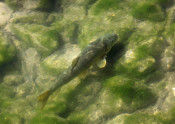 National Fish Passage Program - US Fish and Wildlife Service (USFWS) Dams in Texas According to the US Army Corps of Engineer’s National Inventory of Dams, Texas has over 7,000 dams, more than any other state. Most dams in Texas are privately owned, low-hazard earthen dams built between 1950 and 1989. The amount of damming along Texas waterways has led to freshwater stream habitat fragmentation. Aquatic species which migrate along the streams for spawning and other life cycle events are impeded by the obstructions. Today, many of the dams are obsolete and only... Read More →
National Fish Passage Program - US Fish and Wildlife Service (USFWS) Dams in Texas According to the US Army Corps of Engineer’s National Inventory of Dams, Texas has over 7,000 dams, more than any other state. Most dams in Texas are privately owned, low-hazard earthen dams built between 1950 and 1989. The amount of damming along Texas waterways has led to freshwater stream habitat fragmentation. Aquatic species which migrate along the streams for spawning and other life cycle events are impeded by the obstructions. Today, many of the dams are obsolete and only... Read More →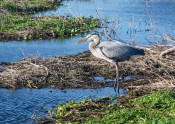 Neotropical Migratory Bird Conservation Act (NMBCA) Grants - US Fish and Wildlife Service (USFWS) About the Neotropical Migratory Bird Conservation Act Grants The Neotropical Migratory Bird Conservation Act’s (NMBCA) mission is to foster long-term conservation of neotropical migratory birds and their habitat in North America and the Caribbean. The upper Texas coast is a critical stopover point for migratory birds traveling along the Central and Mississippi Flyways, and is even used by birds traveling the Pacific and Atlantic Flyways. NMBCA, administered by the US Fish and Wildlife Service (USFWS) Division of Bird Habitat Conservation, provides cost-share... Read More →
Neotropical Migratory Bird Conservation Act (NMBCA) Grants - US Fish and Wildlife Service (USFWS) About the Neotropical Migratory Bird Conservation Act Grants The Neotropical Migratory Bird Conservation Act’s (NMBCA) mission is to foster long-term conservation of neotropical migratory birds and their habitat in North America and the Caribbean. The upper Texas coast is a critical stopover point for migratory birds traveling along the Central and Mississippi Flyways, and is even used by birds traveling the Pacific and Atlantic Flyways. NMBCA, administered by the US Fish and Wildlife Service (USFWS) Division of Bird Habitat Conservation, provides cost-share... Read More →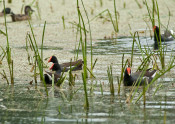 North American Wetlands Conservation Act (NAWCA) Grants - US Fish and Wildlife Service (USFWS) The North American Wetlands Conservation Act (NAWCA) mission is to preserve and enhance wetlands associated with migratory birds and other wildlife. NAWCA, administered by the US Fish and Wildlife Service (USFWS) Division of Bird Habitat Conservation, provides cost-share grants to organizations and individuals who have developed partnerships to implement wetland conservation projects in the US, Canada, and Mexico. Seventy NAWCA projects in Texas have conserved almost 190,000 acres of wildlife habitat! NAWCA grants are competitive and require at least a 1 to... Read More →
North American Wetlands Conservation Act (NAWCA) Grants - US Fish and Wildlife Service (USFWS) The North American Wetlands Conservation Act (NAWCA) mission is to preserve and enhance wetlands associated with migratory birds and other wildlife. NAWCA, administered by the US Fish and Wildlife Service (USFWS) Division of Bird Habitat Conservation, provides cost-share grants to organizations and individuals who have developed partnerships to implement wetland conservation projects in the US, Canada, and Mexico. Seventy NAWCA projects in Texas have conserved almost 190,000 acres of wildlife habitat! NAWCA grants are competitive and require at least a 1 to... Read More →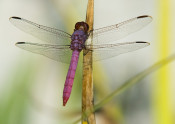 Partners for Fish and Wildlife Program - US Fish and Wildlife Service (USFWS) About the Partners Program The Partners for Fish and Wildlife Program’s (Partners Program) mission is to achieve voluntary habitat restoration on private lands for the benefit of Federal Trust Species. A Partners Program partnership is a voluntary agreement between a private landowner (any non-State or non-Federally owned land) and the US Fish and Wildlife Service (USFWS) and its partners for financial and technical assistance toward achievement of an agreed upon restoration project. A cooperative agreement with a minimum 10 year term is... Read More →
Partners for Fish and Wildlife Program - US Fish and Wildlife Service (USFWS) About the Partners Program The Partners for Fish and Wildlife Program’s (Partners Program) mission is to achieve voluntary habitat restoration on private lands for the benefit of Federal Trust Species. A Partners Program partnership is a voluntary agreement between a private landowner (any non-State or non-Federally owned land) and the US Fish and Wildlife Service (USFWS) and its partners for financial and technical assistance toward achievement of an agreed upon restoration project. A cooperative agreement with a minimum 10 year term is... Read More →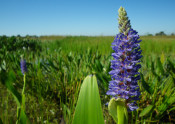 Private Lands Assistance via Texas Parks and Wildlife Department (TPWD) - Texas Parks and Wildlife Department TPWD provides technical assistance, free of charge to land managers who wish to incorporate wildlife management practices into present and future land use decisions. Upon request, a TPWD wildlife biologist will meet with the landowner to perform an ecological assessment of the property and discuss the landowner’s management goals. The wildlife biologist will: provide the landowner with tailored recommendations in the form of a written management plan and demonstrate proper record keeping for wildlife management progress detail and demonstrate wildlife population survey techniques... Read More →
Private Lands Assistance via Texas Parks and Wildlife Department (TPWD) - Texas Parks and Wildlife Department TPWD provides technical assistance, free of charge to land managers who wish to incorporate wildlife management practices into present and future land use decisions. Upon request, a TPWD wildlife biologist will meet with the landowner to perform an ecological assessment of the property and discuss the landowner’s management goals. The wildlife biologist will: provide the landowner with tailored recommendations in the form of a written management plan and demonstrate proper record keeping for wildlife management progress detail and demonstrate wildlife population survey techniques... Read More → Property Tax Valuation for Wildlife Management - State of Texas and Local Central Appraisal Districts Wildlife Management Valuation of Your Property Under Texas Tax Code 1-d-1 (Sec. 23.51), property can continued to be appraised as open space land for tax purposes while being maintained for wildlife management use. Wildlife Management Valuation of a property allows a landowner to maintain and care for the land and wildlife with an ag-type exemption, without all the requirements of an agricultural tax exemption. This 1-d-1 open space exemption can be maintained without the livestock fencing, vetting, and reporting... Read More →
Property Tax Valuation for Wildlife Management - State of Texas and Local Central Appraisal Districts Wildlife Management Valuation of Your Property Under Texas Tax Code 1-d-1 (Sec. 23.51), property can continued to be appraised as open space land for tax purposes while being maintained for wildlife management use. Wildlife Management Valuation of a property allows a landowner to maintain and care for the land and wildlife with an ag-type exemption, without all the requirements of an agricultural tax exemption. This 1-d-1 open space exemption can be maintained without the livestock fencing, vetting, and reporting... Read More → Purchase of Conservation Easements - Various Land Trust and Government Agencies Conservation easements often involve the donation of development rights of land. This donation is often used to obtain a tax deduction. However, in some cases, the development rights of land can be purchased by a willing land trust or government program for a one-time cash payment. Purchased conservation easements are also known as the purchase of development rights (PDRs). If there is funding available for the PDRs, the purchase price is often less than the value of the full value of the... Read More →
Purchase of Conservation Easements - Various Land Trust and Government Agencies Conservation easements often involve the donation of development rights of land. This donation is often used to obtain a tax deduction. However, in some cases, the development rights of land can be purchased by a willing land trust or government program for a one-time cash payment. Purchased conservation easements are also known as the purchase of development rights (PDRs). If there is funding available for the PDRs, the purchase price is often less than the value of the full value of the... Read More →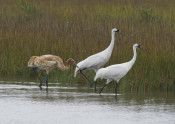 Safe Harbor Agreements (SHA) - US Fish and Wildlife Service (USFWS) Texas is home to many endangered federally listed species which are legally protected by the Endangered Species Act (ESA). Over one-third of the 564 plant and animal species listed as threatened or endangered in the United States use wetland habitats, according to the Texas General Land Office. Many of these species rely on habitat found on privately owned land. A Safe Harbor Agreement (SHA) are a tool for private landowner whom would like to aid in the recovery of a listed or... Read More →
Safe Harbor Agreements (SHA) - US Fish and Wildlife Service (USFWS) Texas is home to many endangered federally listed species which are legally protected by the Endangered Species Act (ESA). Over one-third of the 564 plant and animal species listed as threatened or endangered in the United States use wetland habitats, according to the Texas General Land Office. Many of these species rely on habitat found on privately owned land. A Safe Harbor Agreement (SHA) are a tool for private landowner whom would like to aid in the recovery of a listed or... Read More →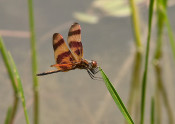 SWCD Technical Assistance - Texas State Soil and Water Conservation Board (TSSWCB) and Local Soil and Water Conservation Districts (SWCD) Soil and Water Conservation Districts (SWCD) are a resource for agricultural landowners to assess conservation issues on their land and develop solutions to these issues. The Texas State Soil and Water Conservation Board (TSSWCB) is the lead administrative organization for SWCDs. Each of the 216 SWCDs in Texas is governed by directors elected by local district landowners. TSSWCB funds program specialists which meet with districts monthly and advise SWCDs on conservation practices... Read More →
SWCD Technical Assistance - Texas State Soil and Water Conservation Board (TSSWCB) and Local Soil and Water Conservation Districts (SWCD) Soil and Water Conservation Districts (SWCD) are a resource for agricultural landowners to assess conservation issues on their land and develop solutions to these issues. The Texas State Soil and Water Conservation Board (TSSWCB) is the lead administrative organization for SWCDs. Each of the 216 SWCDs in Texas is governed by directors elected by local district landowners. TSSWCB funds program specialists which meet with districts monthly and advise SWCDs on conservation practices... Read More →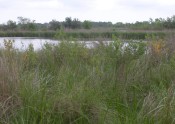 Texas Coastal Program - US Fish and Wildlife Service (USFWS) The Coastal Program assists with funding for coastal habitat projects. The Coastal Program partners with Federal programs, State agencies, Tribal and local governments, non-profit organizations, businesses, industry, land trusts, and private landowners who wish to fulfill habitat conservation goals on their land. The Coastal Program is a reimbursement program. The landowner is not reimbursed for the cost-share portion of the project cost until after the project is completed. Cooperative partnerships are emphasized by the Coastal Program. Coastal Program partners, known as cooperators,... Read More →
Texas Coastal Program - US Fish and Wildlife Service (USFWS) The Coastal Program assists with funding for coastal habitat projects. The Coastal Program partners with Federal programs, State agencies, Tribal and local governments, non-profit organizations, businesses, industry, land trusts, and private landowners who wish to fulfill habitat conservation goals on their land. The Coastal Program is a reimbursement program. The landowner is not reimbursed for the cost-share portion of the project cost until after the project is completed. Cooperative partnerships are emphasized by the Coastal Program. Coastal Program partners, known as cooperators,... Read More →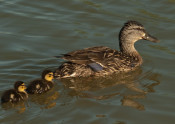 Texas Prairie Wetlands Project - Ducks Unlimited The Texas Prairie Wetlands Project (TPWP) is a partnership between Ducks Unlimited, Texas Parks and Wildlife Department, USDA Natural Resources Conservation Service, and U.S. Fish and Wildlife Service. The TPWP mission is to create overwintering habitat for waterfowl and improve health and survival rates before migration in the spring. TPWP works with private landowners in 28 counties on the Texas Gulf Coast to restore and enhance existing wetlands and to create new wetlands. TPWP provides technical assistance for surveying, engineering, and designing a wetland project and... Read More →
Texas Prairie Wetlands Project - Ducks Unlimited The Texas Prairie Wetlands Project (TPWP) is a partnership between Ducks Unlimited, Texas Parks and Wildlife Department, USDA Natural Resources Conservation Service, and U.S. Fish and Wildlife Service. The TPWP mission is to create overwintering habitat for waterfowl and improve health and survival rates before migration in the spring. TPWP works with private landowners in 28 counties on the Texas Gulf Coast to restore and enhance existing wetlands and to create new wetlands. TPWP provides technical assistance for surveying, engineering, and designing a wetland project and... Read More →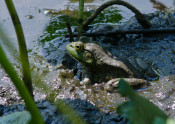 Water Quality Management Plan Program - Texas State Soil and Water Conservation Board (TSSWCB) Why Develop a Water Quality Management Plan? The Water Quality Management Plan Program (WQMP) is a voluntary program for agricultural and silvicultural producers. The goal is to identify and manage nonpoint source water pollution, which may include animal waste, soil erosion, and pesticide runoff. A WQMP includes site-specific, appropriate land practices, production practices, management measures, and technologies implemented to meet state standards for pollution prevention or abatement. The WQMP will be based on Natural Resource Conservation Service (NRCS) Field Office... Read More →
Water Quality Management Plan Program - Texas State Soil and Water Conservation Board (TSSWCB) Why Develop a Water Quality Management Plan? The Water Quality Management Plan Program (WQMP) is a voluntary program for agricultural and silvicultural producers. The goal is to identify and manage nonpoint source water pollution, which may include animal waste, soil erosion, and pesticide runoff. A WQMP includes site-specific, appropriate land practices, production practices, management measures, and technologies implemented to meet state standards for pollution prevention or abatement. The WQMP will be based on Natural Resource Conservation Service (NRCS) Field Office... Read More →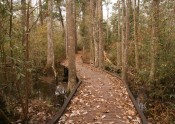 Water Resources Program - Texas A&M Forest Service (TFS) The Water Resources Program The Water Resources Program, administered by Texas A&M Forest Service (TFS), promotes the value of wetlands and supports their protection during forest operations through recommended best management practices (BMPs). The Water Resources Program at TFS provides technical assistance to landowners by working with forest operations to identify BMPs that could be implemented into their forest operation. In addition, the Water Resources Program offers a free publication of the Texas Forestry Best Management Practices Handbook on their website as well... Read More →
Water Resources Program - Texas A&M Forest Service (TFS) The Water Resources Program The Water Resources Program, administered by Texas A&M Forest Service (TFS), promotes the value of wetlands and supports their protection during forest operations through recommended best management practices (BMPs). The Water Resources Program at TFS provides technical assistance to landowners by working with forest operations to identify BMPs that could be implemented into their forest operation. In addition, the Water Resources Program offers a free publication of the Texas Forestry Best Management Practices Handbook on their website as well... Read More →

